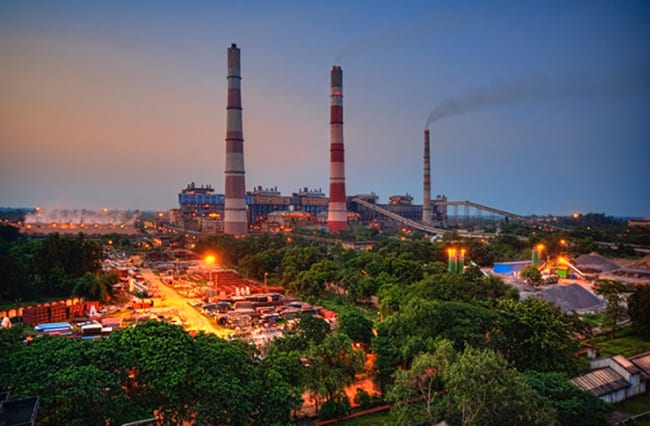The Union Finance Minister stated in his Union Budget presentation for 2020-21 that closing down outdated coal power plants, which are big producers to emissions, will help India meet its Nationally Determined Contributions.
Because plants older than 25 years account for around 20% of the country’s total installed thermal capacity and play a key role in the country’s power supply, choices about their retirement should be scrutinised more closely to see if the promised advantages are actually realised.
Advantages of Shutting Down :-

- Economic Benefit: It is stated that because newer (and presumably more efficient) coal-based capacity is underutilized, closing down older, inefficient plants will result in higher efficiency, lower coal use, and hence cost savings.
- Pollution Control Mechanism Difficulty: It would be uneconomical for old plants to install pollution control equipment necessary to fulfill the Ministry of Environment, Climate Change, and Forest’s emission requirements, so it would be best to retire them.
- Decline in Land Degradation: Untreated air and water pollutants from coal power plants, particularly older ones, have an adverse effect on the water, flora, and wildlife of nearby areas, rendering them unsuited for living or livelihood activities.
- At a time when energy consumption has been affected owing to Covid- 2 19, shutting down ageing coal-based power plants and freezing those under development will save over Rs. 1.45 lakh crore.
- Savings will be realised by not modifying existing facilities to lower toxicity from their emissions, and by replacing power from older coal plants with cheaper renewable sources, discoms will be able to close the gap between cost of supply and income generation.
Risks Associated with Shutting Down :-

- Not Much Saving: The entire reduction in generating costs from closing down facilities older than 25 years, according to analysis, would be less than Rs. 5,000 crore per year, or less than 2% of total power generation costs.
- Even if the plants are prematurely retired, these savings may not be enough to cover the fixed expenditures (such as loan payments) that would have to be paid regardless.
- Similarly, coal consumption reductions from replacing power from facilities older than 25 years with modern coal plants are estimated to be in the 1% to 2% range.
- Environmental Benefits of Some Ancient Plants: Because their existing fixed costs (which would increase with pollution control equipment installation) are relatively low, some old plants may continue to be economically viable even if pollution control equipment is installed.
- Furthermore, roughly half of the coal capacity older than 25 years has already issued tenders for the installation of pollution control equipment.
- Power Sector Needs: India has a power need, and the minimal savings associated with coal plant early retirement could not be worth the risks.
- There is a rising demand for capacity that can offer flexibility, balancing, and ancillary services to support the sector’s expanding intermittent renewable power.
- Thermal capacity from the past, which has lower fixed costs, is a great contender to fill this function until other technologies (like as storage) can replace it at scale.
- Furthermore, the old capacity’s capacity value is crucial for meeting immediate peak load and load when renewable energy is absent.
- Political Economic Risk: ‘Political Economic Risk’ is a term that refers to the risk that Without rigorous evaluations, aggressive early retirement of coal-based capacity might result in actual or perceived energy shortages in some states, prompting calls for State-owned enterprises to invest in coal-based base-load capacity.
- A total of 65 gigawatts (GW) of thermal capacity is already planned, with roughly 35 GW in different phases of development. The demand for capacity that can provide flexibility, balancing, and supplementary services is rising.
- This is likely in excess of what the country requires, and any future additions, driven by political economic concerns at the state level, would result in stranded assets and resources.
- More Analysis And Research Required Before Final Decision: Before making a final decision, more research and analysis is required. Using age as the only criterion for making these judgments is a harsh tool that might backfire.
- To make retirement-related decisions, a more disaggregated and nuanced analysis, taking into account the various technical, economic, and operating characteristics of individual plants and units, as well as factors like renewable energy intermittency, growing demand, and the need to meet emission standards, would be appropriate.
- For example, plants in Uttar Pradesh such as Rihand and Singrauli, as well as Madhya Pradesh’s Vindhyanchal, are all over 30 years old and have very low generating costs of roughly 1.7/kWh, which is lower than the national average.
- This might be due to locational advantage rather than efficiency, as older facilities are likely to be closer to the coal supply, lowering coal transportation costs. However, this just adds to the problem’s complexity, as efficiency does not always imply cost savings.
Way Forward :-

- Strategic Decommissioning of Old and Inefficient Power Plants: To derive long-term economic and environmental benefits, it may be prudent to let old capacity fade away in due course, saving some of them as they are efficient, while focusing on such detailed analysis and weeding out the unnecessary capacity in the pipeline.
- Solar Power Plants at a Low Cost: The average cost of coal-fired projects is Rs.4 per unit, with an escalating trend, but new solar power plants are being bid out at less than Rs.3 per unit.
- Encourage the private sector: Greater competition in the private sector can result in more money and innovation.
- New coal-fired power plants are still being funded, despite the fact that the private sector is not building any coal-fired power plants at all; only public utilities are doing so. These PSU thermal facilities are typically financed using public funds from public sector banks.
- UDAY 2.0: The government’s announcement of the commencement of UDAY 2.0, which calls for the installation of smart prepaid metres, quick payment by discoms, short-term coal availability, and the revival of gas-based plants, is a step in the right direction.
- Flexible Contracts: Long-term supply contracts must be flexible in order for public utilities to adjust to unanticipated circumstances, such as a Covid fall in demand.
Conclusion :-
We require an energy transition in order to realise the co-benefits of reduced local and global emissions. We also need to ensure that everyone has access to energy, as energy poverty and unfairness are unacceptable.
India has to focus on a diverse energy mix; while solar and wind power have a lot of potential, hydrogen might be a game changer in the Indian energy revolution.

